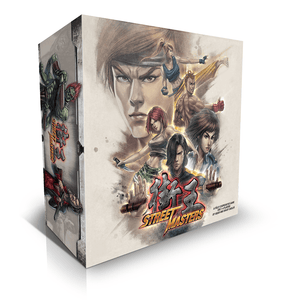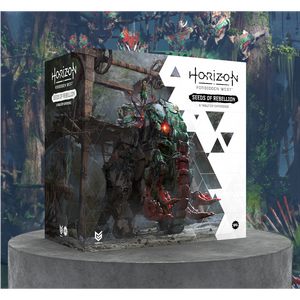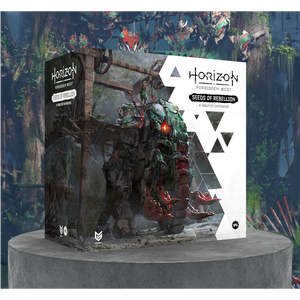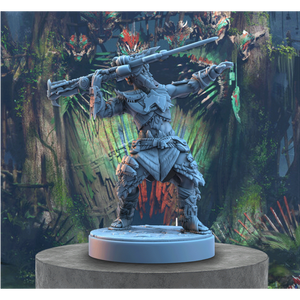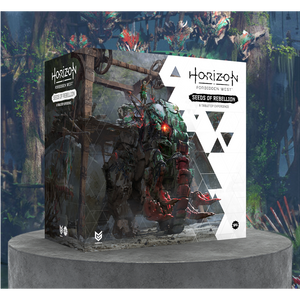Welcome back, Shipmates
It’s time for the next article in our Sea of Thieves™: Voyage of Legends designer diary series.
Last time around I began to introduce the game’s structure, and how players take their turns, including moving their ships, and interacting with the crew. If you missed that article (or the previous ones before that), no need to worry—you can find them here.
At the end of that article we stopped right before the enemies got to take their turn... and now, a week on, we’re going to let them do exactly that.
So, get the cannons loaded and the bucket ready to bail water, because we’re in for some rough seas!
Ocean Hazards
Once the players have each finished their turn, the Fleets Phase ends, and it’s time to move on to the Ocean Hazards phase. This is where the enemies search around for the players’ ships, and if they find them? Well I think we all know what happens next.
Now I know I promised to detail how combat and enemies work, but first I want to skip forward a phase and talk about how they appear in the first place. Why? Because as one of the most identifiable elements of the video game, enemies each have their own personalities, and I’d like to illustrate how our team introduced them not only during their behaviour but also in how they first appear.
So, moving forward to the event phase, how does that work?
Well, time to take a look at a card.

At the start of each event phase, a player we refer to as the Scurvy Knave draws a card from the event deck. The Scurvy Knave is always the player currently in last place—this is important, as several of the effects from these cards will act as a sort of speed boost or catch up mechanic at best, and at their very devilish worst, a way to significantly punish opponents.
As I’m here, I’ll briefly discuss the first and second boxes for the sake of completeness.
The first box is called the High Seas section, and always has a neutral effect that will cause a change to the state of the game. This might mean resetting resources, bonus loot, additional enemies, or any number of other variables that keep players guessing.
The second section is the Cutthroats Corner section, and here’s where the Scurvy Knave typically gets to have some fun hindering the other players, or will pick up a potent ability for use later on (even if they’ve since improved their standing).
I won’t dive into either of these too much, as I want the cards to be a surprise when you encounter them, but suffice to say, they’re an awful lot of fun and really make each turn feel different.
The final aspect of these cards is the enemy spawns section, and that’s the symbols at the top. There are four different ocean-bound enemies in Sea of Thieves™: Voyage of Legends; the Skeleton Sloop, the Skeleton Galleon, the Megalodon, and, of course, the Kraken. I’ll also add the Skeleton Fort to this list, as although it doesn’t ply its deathly presence on the high seas, it does appear via these cards.
When a card with the symbol corresponding to one of these enemies is drawn, the Scurvy Knave rolls a dice to determine which part of the board it will appear and follows the rules for the enemy in question.
The Megalodon and Skeleton Sloop both appear immediately, being desperately ready to ruin the day of any unfortunate soul that happens to be nearby. The Skeleton Galleon shares a symbol with the Skeleton Sloop, and as such will only appear if the Skeleton Sloop is already in play—so, if you see one, running isn’t always the best option, especially if you can convince one of the other players to help sink it before a second, more powerful craft appears on the horizon.
Speaking of horizons, the Skeleton Fort always appears on an island, although the exact location is randomised to keep players on their toes, as is the identity of the Pirate Captain that lords over it.
Finally, the Kraken requires several sightings before it fully appears, tentacle tokens counting towards the moment it ambushes the ship with the most cargo in its hold. Be very afraid of this eventuality—whilst many cards have only the single symbol as shown above, others can have more.
Enemy Behaviour
Returning to the start of the enemy phase, in addition to a unique reference card containing their special rules, damage tracks, and the initiative order in which they take turns, each enemy type has a unique behaviour card.
These cards dictate what the enemy does during its turn, and are always posed as a series of questions, which the players follow until they’re told the enemy’s turn ends. Once that happens, the players move on to the next enemy, until all enemies have taken a turn and the phase ends.
Lets take a moment to look at one of these cards, shall we?


Here, we see the Megalodon will either move into the same hex as a player’s ship and attack, or if no eligible target is in range, either patrol its territory or chase towards a player’s ship, as suits the Scurvy Knave.
A ship’s ability to fight off such an attack depends on the amount of crew on hand—and the more crew the better! Suffering as much as five damage as you see here will likely mean that a small craft is doomed; even if the player spends all of their time repairing it, they’ll still have to contend with the beast in the next turn.
At least in the case of the Megalodon, you can escape, if you have enough speed to reach a safer tile, or not be the closest ship any more. The Kraken? Well, that’s another story…
But, I hear you asking, that’s all well and good for the sea monsters and skeleton ships. What about skeletons themselves, and combat against them? And how do I attack other players’ ships?
Well, worry not. Because that’s up next.
Crew Rolls
On the Megalodon’s behaviour card we saw the term crew roll, and I’ve previously mentioned that ships with more crew are more efficient. What does that mean?
Well, crew rolls are how a wide variety of tasks are carried out in the game, including when you’re making attacks against enemies during your own turn. To make one, you simply roll a pool of dice equal to the number of face-up (i.e. non-defeated) crew on your ship. Each 3, 4, or 5 counts as one success, and each 6 counts as two successes.
Those successes are then spent in resolving whatever the task called for (so in the above example, cancelling damage from the Megalodon).
This is fairly straightforward when making an Open Fire action with a ship (although, there are several modifiers that can come into play from special crew, ammunition types, and fortune cards – more about them in later updates).
Fighting Skeletons is a little more abstract, and is resolved as part of the plunder action. When making one, the player makes a crew roll as above, and can then choose how to spend their successes, either retrieving cargo from the ship’s hex, or drawing from the loot bag.
Be wary however. Skeletons won’t chase you down like sea monsters if left alone, but if you come to raid their island? Another matter entirely. After making a plunder action, each remaining skeleton token in the hex defeats one of the ship’s crew tokens, so think carefully about spending some successes from your roll to defeat skeleton tokens, as well as digging for buried treasure.
There are a lot of hidden intricacies to combat and enemy behaviour as you’d imagine, but as a working framework for what to expect, that will certainly do for the moment, especially when I’ve already taken up so much of your time.
Next up? Upgrading your ship and crew at the Outpost…
Come and chat with Sherwin and the rest of the SFG team in the comments below, and on the SFG Discord servers here.

 Join us on Discord
Join us on Discord


